 |
 |
Our enthusiastic and extremely knowledgeable perennials team is here to answer your questions and help you choose the best perennials for your situation. There’s always something in bloom for sun, shade, butterflies, birds or deer resistance as well as a variety of bulbs for your space.
Stroll through our time-tested favorites and introduce yourself to the newest varieties. We garden with perennials too; we love them and it shows!
|
18 found, showing page 1 of 2

Massive clusters of vibrant, magenta flowers bloom profusely in summer. Vigorous grower. USDA 4-11
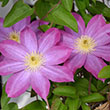
Early blooming compact variety with deep pink flowers and pale centers. Works well in tighter spaces than your traditional varieties. USDA 4-11
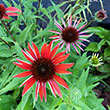
Large red blooms. Clumping. Tolerates heat & poor soils. USDA 3-8

Dark red blooms. Purple toned foliage. Rounded habit. USDA 4-9
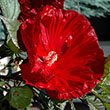
Dark red blooms. Purple toned foliage. Rounded habit. USDA 4-9
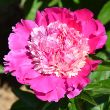
Plant Height: 18 inches
Flower Height: 24 inches
Spacing: 30 inches
Sunlight: full sun, partial shade
Hardiness Zone: 4a
Description:
An exceptionally fragrant selection; bright, salmon pink double flowers on tough, firm stems, look spectacular in the garden in mid to late spring; attracts butterflies and pollinators; an excellent choice for spring color in shrub borders or beds
Ornamental Features:
Madame Emile Debatene Peony features bold fragrant salmon flowers with pink overtones at the ends of the stems from mid to late spring. The flowers are excellent for cutting. Its glossy compound leaves emerge burgundy in spring, turning dark green in color throughout the season.
Landscape Attributes:
Madame Emile Debatene Peony is an herbaceous perennial with a more or less rounded form. Its medium texture blends into the garden, but can always be balanced by a couple of finer or coarser plants for an effective composition.
This is a relatively low maintenance plant, and should be cut back in late fall in preparation for winter. It is a good choice for attracting bees and butterflies to your yard, but is not particularly attractive to deer who tend to leave it alone in favor of tastier treats. Gardeners should be aware of the following characteristic(s) that may warrant special consideration:
- Disease
Madame Emile Debatene Peony is recommended for the following landscape applications:
- Mass Planting
- General Garden Use
Planting & Growing:
Madame Emile Debatene Peony will grow to be about 18 inches tall at maturity extending to 24 inches tall with the flowers, with a spread of 3 feet. When grown in masses or used as a bedding plant, individual plants should be spaced approximately 30 inches apart. The flower stalks can be weak and so it may require staking in exposed sites or excessively rich soils. It grows at a slow rate, and under ideal conditions can be expected to live for approximately 20 years. As an herbaceous perennial, this plant will usually die back to the crown each winter, and will regrow from the base each spring. Be careful not to disturb the crown in late winter when it may not be readily seen!
This plant does best in full sun to partial shade. It does best in average to evenly moist conditions, but will not tolerate standing water. It is not particular as to soil pH, but grows best in rich soils. It is somewhat tolerant of urban pollution. Consider applying a thick mulch around the root zone in winter to protect it in exposed locations or colder microclimates. This particular variety is an interspecific hybrid. It can be propagated by division; however, as a cultivated variety, be aware that it may be subject to certain restrictions or prohibitions on propagation.
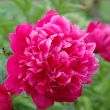
Height: 3 feet
Spacing: 30 inches
Sunlight: full sun
Hardiness Zone: 2a
Ornamental Features:
Kansas Peony features bold lightly-scented ruby-red flowers at the ends of the stems from late spring to early summer. The flowers are excellent for cutting. Its compound leaves remain green in color throughout the season.
Landscape Attributes:
Kansas Peony is an herbaceous perennial with a more or less rounded form. Its medium texture blends into the garden, but can always be balanced by a couple of finer or coarser plants for an effective composition.
This is a relatively low maintenance plant, and should be cut back in late fall in preparation for winter. Deer don't particularly care for this plant and will usually leave it alone in favor of tastier treats. Gardeners should be aware of the following characteristic(s) that may warrant special consideration:
- Disease
Kansas Peony is recommended for the following landscape applications:
- Mass Planting
- General Garden Use
Planting & Growing:
Kansas Peony will grow to be about 30 inches tall at maturity, with a spread of 3 feet. When grown in masses or used as a bedding plant, individual plants should be spaced approximately 30 inches apart. The flower stalks can be weak and so it may require staking in exposed sites or excessively rich soils. It grows at a slow rate, and under ideal conditions can be expected to live for approximately 20 years. As an herbaceous perennial, this plant will usually die back to the crown each winter, and will regrow from the base each spring. Be careful not to disturb the crown in late winter when it may not be readily seen!
This plant should only be grown in full sunlight. It prefers to grow in average to moist conditions, and shouldn't be allowed to dry out. It is not particular as to soil pH, but grows best in rich soils. It is somewhat tolerant of urban pollution. This particular variety is an interspecific hybrid. It can be propagated by division; however, as a cultivated variety, be aware that it may be subject to certain restrictions or prohibitions on propagation.
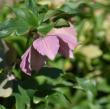
Height: 18 inches
Spacing: 14 inches
Sunlight: partial shade, full shade
Hardiness Zone: 4a
Other Names: Pine Knot Best Strain, Lenten Rose, Winter Rose
Group/Class: Pine Knot Select Mix
Description:
Large nodding buttercup-type single to semi-double blooms are a wide mix of colors, including various shades and tints of white, pink, red, purple, and yellow; great in woodland gardens and on shaded slopes
Ornamental Features:
Pine Knot Select Hellebore features showy nodding rose cup-shaped flowers with purple overtones at the ends of the stems from late winter to early spring. Its glossy oval compound leaves emerge lime green in spring, turning bluish-green in color the rest of the year.
Landscape Attributes:
Pine Knot Select Hellebore is an herbaceous evergreen perennial with an upright spreading habit of growth. Its medium texture blends into the garden, but can always be balanced by a couple of finer or coarser plants for an effective composition.
This is a relatively low maintenance plant, and should be cut back in late fall in preparation for winter. Deer don't particularly care for this plant and will usually leave it alone in favor of tastier treats. It has no significant negative characteristics.
Pine Knot Select Hellebore is recommended for the following landscape applications:
- Mass Planting
- Rock/Alpine Gardens
- Border Edging
- General Garden Use
- Naturalizing And Woodland Gardens
Planting & Growing
Pine Knot Select Hellebore will grow to be about 14 inches tall at maturity, with a spread of 18 inches. When grown in masses or used as a bedding plant, individual plants should be spaced approximately 14 inches apart. Its foliage tends to remain dense right to the ground, not requiring facer plants in front. It grows at a medium rate, and under ideal conditions can be expected to live for approximately 5 years. As an evegreen perennial, this plant will typically keep its form and foliage year-round.
This plant does best in partial shade to shade. It does best in average to evenly moist conditions, but will not tolerate standing water. It is not particular as to soil pH, but grows best in rich soils. It is somewhat tolerant of urban pollution, and will benefit from being planted in a relatively sheltered location. This particular variety is an interspecific hybrid, and parts of it are known to be toxic to humans and animals, so care should be exercised in planting it around children and pets. It can be propagated by division; however, as a cultivated variety, be aware that it may be subject to certain restrictions or prohibitions on propagation.
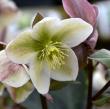
Height: 15 inches
Spacing: 14 inches
Sunlight: partial shade full shade
Hardiness Zone: 4a
Other Names: Lenten Rose, Winter Rose
Description:
Large dangling buttercup-type flowers of ivory streaked with rose and chartreuse emerge in late winter and spring, one of the first flowers to come up in cool weather and what a beautiful harbinger they are; great in woodland gardens and on shaded slopes
Ornamental Features:
Ivory Prince Hellebore features showy nodding white cup-shaped flowers with chartreuse overtones and rose streaks at the ends of the stems from late winter to early spring. Its glossy oval compound leaves remain bluish-green in color throughout the year.
Landscape Attributes:
Ivory Prince Hellebore is an herbaceous evergreen perennial with an upright spreading habit of growth. Its medium texture blends into the garden, but can always be balanced by a couple of finer or coarser plants for an effective composition.
This is a relatively low maintenance plant, and should be cut back in late fall in preparation for winter. Deer don't particularly care for this plant and will usually leave it alone in favor of tastier treats. It has no significant negative characteristics.
Ivory Prince Hellebore is recommended for the following landscape applications:
- Mass Planting
- Rock/Alpine Gardens
- Border Edging
- General Garden Use
- Naturalizing And Woodland Gardens
Planting & Growing:
Ivory Prince Hellebore will grow to be about 12 inches tall at maturity, with a spread of 18 inches. When grown in masses or used as a bedding plant, individual plants should be spaced approximately 14 inches apart. Its foliage tends to remain dense right to the ground, not requiring facer plants in front. It grows at a medium rate, and under ideal conditions can be expected to live for approximately 5 years. As an evegreen perennial, this plant will typically keep its form and foliage year-round.
This plant does best in partial shade to shade. It does best in average to evenly moist conditions, but will not tolerate standing water. It is not particular as to soil pH, but grows best in rich soils. It is somewhat tolerant of urban pollution, and will benefit from being planted in a relatively sheltered location. This particular variety is an interspecific hybrid, and parts of it are known to be toxic to humans and animals, so care should be exercised in planting it around children and pets. It can be propagated by division; however, as a cultivated variety, be aware that it may be subject to certain restrictions or prohibitions on propagation.

Ivory rose outward facing blooms. Glossy foliage. USDA 5-8
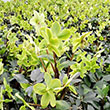
White flowers are tinged with lime-green accents. Rabbit and deer resistant. Semi-evergreen. USDA 6-9
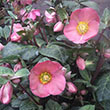
Penny's Pink' Hellebore | Muave outward-facing blooms. Marbled evergreen foliage. USDA 4-9
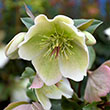
Molly's White Hellebore | White, single-petaled flowers with lime-green accents. Late season bloomer. USDA 4-8
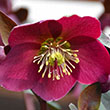
'Anna's Red' Hellebore | Burgundy outward facing blooms. Marbled foliage. Evergreen. USDA 4-9

Semi-double white and cherry red blooms. Evergreen. USDA 4-8
18 found, showing page 1 of 2












